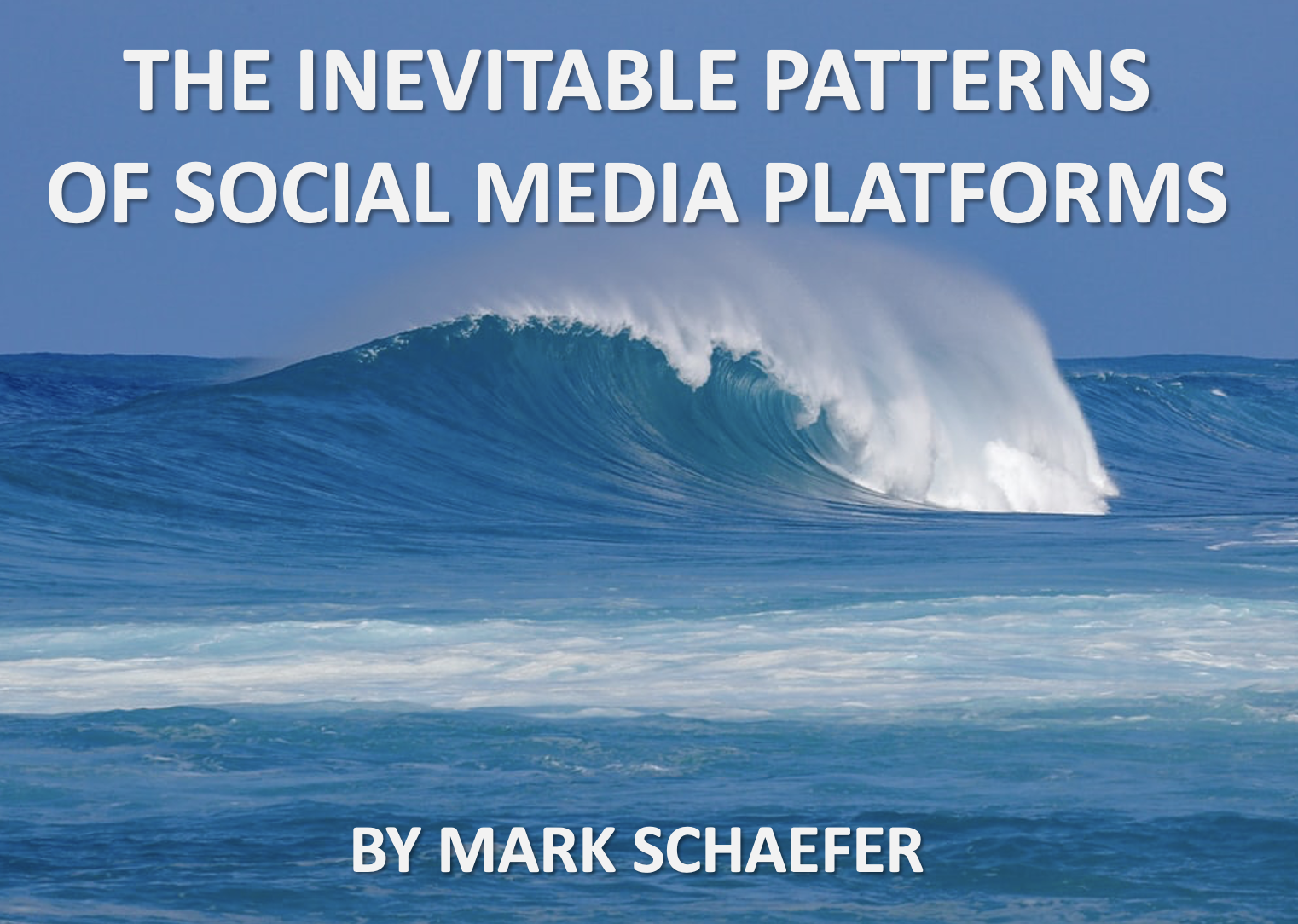
A few years ago, I attended a panel discussion on Snapchat at the annual Social Media Marketing World conference. This was a time when Snapchat was the hottest social media platform around. People proclaimed it would be “the next Facebook!”
One of the conference panelists gushed: “You HAVE to be on Snapchat!!! It’s so easy to build an audience and get engagement there, compared to any other social media platform!”
I knew, with certainty, that this fellow’s positive experience with Snapchat and its levels of engagement would end. I don’t have a crystal ball, but I do know that there is an inevitable pattern that repeats itself in every successful media channel.
To understand this, let’s go back to the early days of television. Trust me on this …
A repeating content pattern
In the early days of television, it was easy to be a star.
The first television stations were starved for content. If you wanted to teach baking or auto repair, you could probably start your own show by trotting down to the local station. Or, you could grab your guitar and sing along on the hundreds of “variety shows” that popped up all over the country.
 Fun fact, this is how the legendary Dolly Parton got her start. As a six-year-old girl, she sang songs on a variety show here in my hometown of Knoxville, Tennessee. That’s young Dolly in the picture.
Fun fact, this is how the legendary Dolly Parton got her start. As a six-year-old girl, she sang songs on a variety show here in my hometown of Knoxville, Tennessee. That’s young Dolly in the picture.
The entry barriers were also low for advertisers. One colorful grocery store owner sponsored nearly all of the early TV programs here in my town.
As television became more popular, the programming became more sophisticated. To compete, the stations hired professional writers and big stars. As the popularity of television increased, the ability to be seen on TV, or sponsor a show, diminished as the cost of producing competitive, superior content skyrocketed.
What does it take to stand out on TV today? You might think of The Mandalorian, which can cost as much as $15 million per episode to produce! And how many advertisers do you see? None.
There is a lesson here that applies to every social media platform that we love. This content pattern I noted in television repeats in every channel … inevitably, without end.
The cycle of Content Shock
Back in 2014, I wrote a well-known post called Content Shock that predicted how this pattern would work. As any social media platform becomes popular and fills with content, it requires more money to compete and be seen. To win over time, you’ll have to either:
a) significantly increase what you spend to create better and better content, or
b) increase the amount of money you spend on promoting your content.
In either case, some companies won’t survive this content arms race. It just gets too expensive and too risky.
The richest studios Like Disney will win the race in TV. Likewise, the richest content producers will eventually rise to the top in industry niches. It may take years, or even decades, but ultimately content marketing will not be a sustainable strategy for many businesses as the lower-budget players drop out (the ultimate content strategy is to CREATE content shock for your competitors!).
Content shock is a pattern that repeats over and over, in every media outlet, in nearly every place in the world.
A case study
When I wrote the original Content Shock post, some gurus laughed it off as an improbable theory. But it’s not a theory. It’s basic supply-and-demand economics, and it’s playing out in the social media world every day.
Here’s a personal and painful example.
For several years, I was a contributor to Harvard Business Review. It’s really difficult to get an article accepted to this prestigious business journal. Historically, about one-third of my submissions made it to publication.
About three years ago, I simply could not get anything approved. I was doing great work … but nothing made the cut!
The editor explained to me: “Many powerful executives from big companies have discovered that getting published on our site is good for business and their personal brands. So they’ve hired agencies to research and write content for them. Mark, you’re creating your best work, and a few years ago, you would have made the cut, but you just can’t compete with these New York City agencies.”
I stopped submitting articles. I could not compete. The deepest pockets won.
Back to Snapchat
This is how I could predict that the enthusiastic young creators on Snapchat would not have such an easy time sustaining their audience growth and driving engagement in the long term.
This is how you can predict the future, too! All you have to know is that as any social media platform grows in popularity, it never becomes easier to compete. There are some interesting implications:
- In any content channel, there isn’t as much advantage being an early adopter as some would hype. If you can’t keep up with the content arms race in the long term, you’ll fade with the pack.
- The importance of establishing a powerful brand is significant. If you’re well-known and the authority in your niche, your content can be seen in almost any situation. I might not make the cut on HBR, but an Elon Musk post would. Anything that features Apple or Nike will get some attention, even if it is a grainy video.
- There is always room for the new and absurd. Something truly revolutionary and relevant can cut through the noise, at least for a time, on even the most saturated channels.
- Perhaps the ultimate solution is community. If you own a tribe of passionate fans, you no longer have to count on outside channels for success, no matter what happens there. Of course, you still have to compete. There is always a threat of a rival community becoming more interesting and relevant. The future of marketing is community.
When I think about this repeating pattern of content saturation, I have this image in my mind of the endless waves forming in the ocean and growing larger and larger. But there is a difference. The biggest waves never crash. The best content-fueled waves, like Snapchat, just keep getting bigger. If a wave does crash, the surfers leave and look for the next one, like maybe TikTok!
Make sense to you?
 Mark Schaefer is the executive director of Schaefer Marketing Solutions. He is the author of several best-selling digital marketing books and is an acclaimed keynote speaker, college educator, and business consultant. The Marketing Companion podcast is among the top business podcasts in the world. Contact Mark to have him speak to your company event or conference soon.
Mark Schaefer is the executive director of Schaefer Marketing Solutions. He is the author of several best-selling digital marketing books and is an acclaimed keynote speaker, college educator, and business consultant. The Marketing Companion podcast is among the top business podcasts in the world. Contact Mark to have him speak to your company event or conference soon.
Follow Mark on Twitter, LinkedIn, and Instagram.
Wave photo courtesy Unsplash.com


